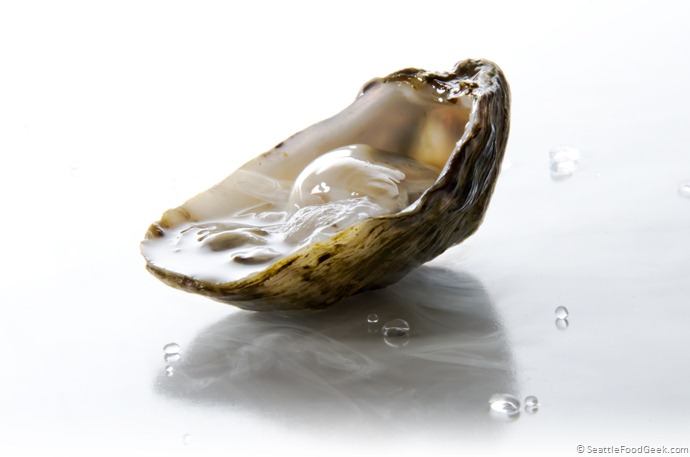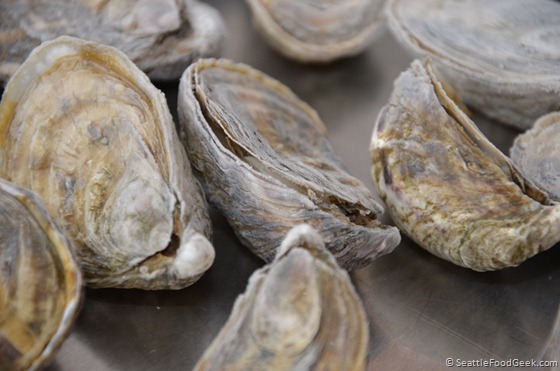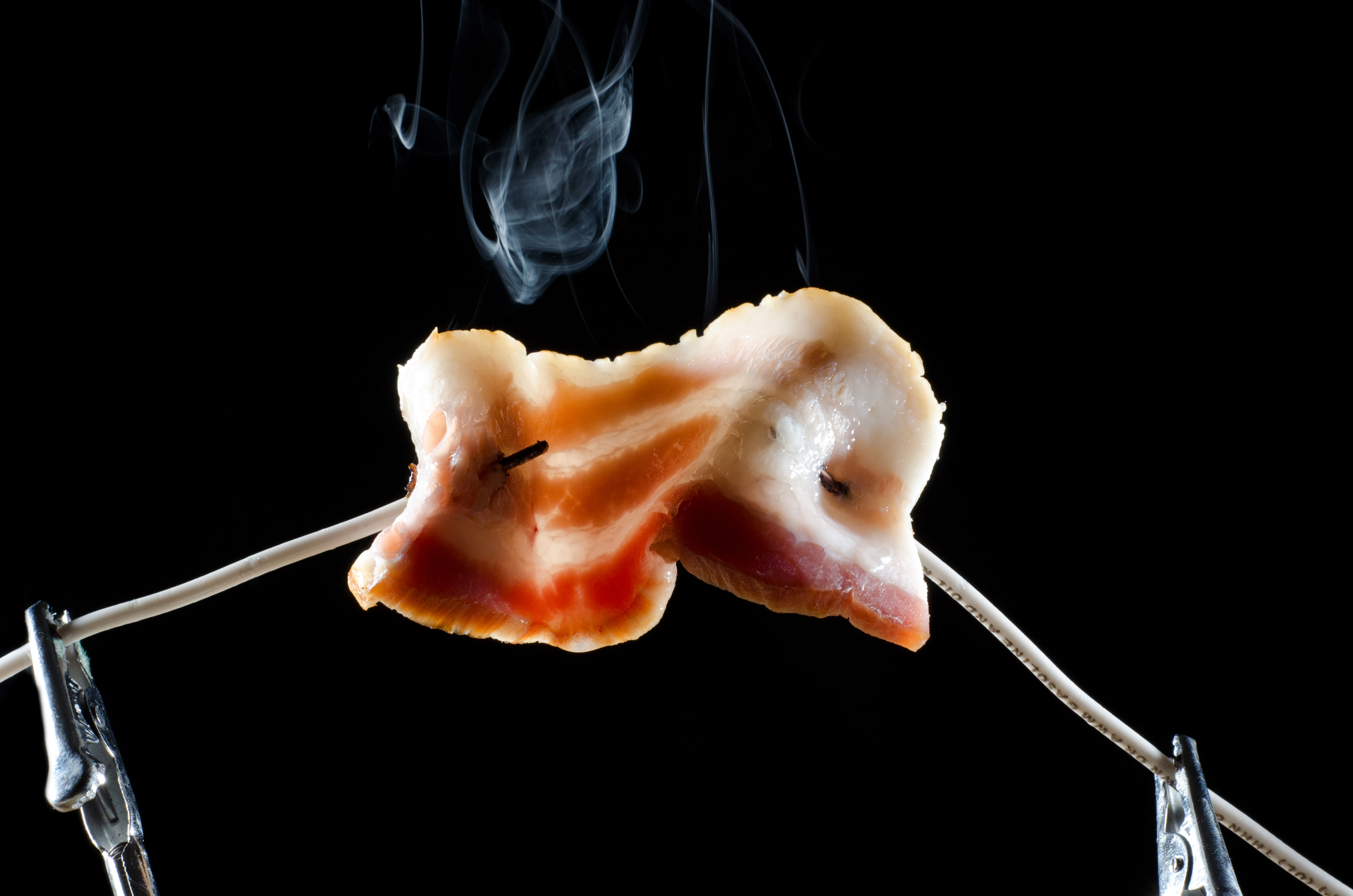
I don’t have a lot experience shucking – I find it awkward and a little dangerous to go jabbing a blade into an oyster’s crevice. So, it’s a good thing I can use liquid nitrogen to do the work instead. Nitro-shucking, or cryoshucking, is the process of opening the shells of mollusks by dipping them in liquid nitrogen then allowing them to thaw. Due to a process which I cannot (yet) explain, this quick freeze causes the shells to release way more easily, often just by sliding them off with your finger.
When my friend, Becky Selengut, local private chef and distinguished author of the cookbook Good Fish, announced on Facebook that she was getting her shucking knife ready for the bounty of oysters at her book release party, I jokingly suggested that we cryoshuck them. She said “sure”.
Liquid nitrogen is not as easy to obtain as, say, dry ice, since you can’t exactly pour it into an empty milk jug and be on your way. Liquid nitrogen must be stored in a special kind of super-thermos called a dewar, which are $300+ used. Luckily, my buddy and cooking compadre Jethro owns a 5 liter dewar. After a quick trip to Praxinair for a fill-up, I was ready to try out the new technique.
I first heard about nitro-shucking by Brian McCracken and Dana Tough at Spur Gastropub, and I’ve seen it mentioned on the Ideas in Food blog, who were referencing Modernist Cuisine. The Modernist Cuisine team got the technique from Homaro Cantu and mention it briefly in the book. However, I didn’t have an exact “recipe” for the procedure – only generosity of Becky and Marco from Taylor Shellfish, who provided a small mountain of gorgeous oysters for the event.
Before the guests arrived (in case things went terribly wrong), I poured about an inch of liquid nitrogen in a hotel pan and gently dropped in a handful of Shigoku oysters. I let them “boil” in the liquid for 20-30 seconds, then removed them to a sheet pan to come back to temperature. As soon as they were removed from the cold, I could hear the shells begin to pop open. We stored the tray of oysters in the refrigerator for an hour to warm up, but even then, they were still pretty frosty and even a little frozen on the inside. As the oysters rested longer, many of their shells were visibly separated, but others were not. The photo below shows a few of the oysters with shells that popped after freezing.

I was able to remove these shells using my fingers (no shucking knife necessary!) and the oyster came loose easily. However, the remaining 30% or so needed to be shucked conventionally. So, clearly there’s merit to nitro-shucking, but I’ve still got some work to do to perfect the technique. I guess I’ll have to try again.
Note: I looked up the reference to liquid nitrogen shucking in Modernist Cuisine after I tried this little experiment. They recommend spraying liquid nitrogen onto the hinge of the oyster shell. Perhaps that will yield the results I was after!
But for now, onto the party…

Good Fish has gotten great reviews, and for good reason. Becky knows her way around a seafood counter like nobody’s business and she’s shared that knowledge, along with her unmistakable wit, throughout the book. The recipes are exquisitely suited for life in the Pacific Northwest and espouse sustainable seafood choices. There’s an entire chapter dedicated to oysters, for example, which covers background on local species, buying tips and sustainability information. In addition Becky included recipes for oyster and artichoke soup, “hangtown fry” (an eggs, bacon and oyster scramble of sorts), oyster succotash, oysters on the half shell with cucumber sorbet, and oyster, chorizo and apple stuffing. With that many tantalizing recipes to work with, it’s a good thing I have a way to shuck in bulk!

Some really wonderful blog posts on this site, thanks for contribution. virtual private server | unmetered vps |